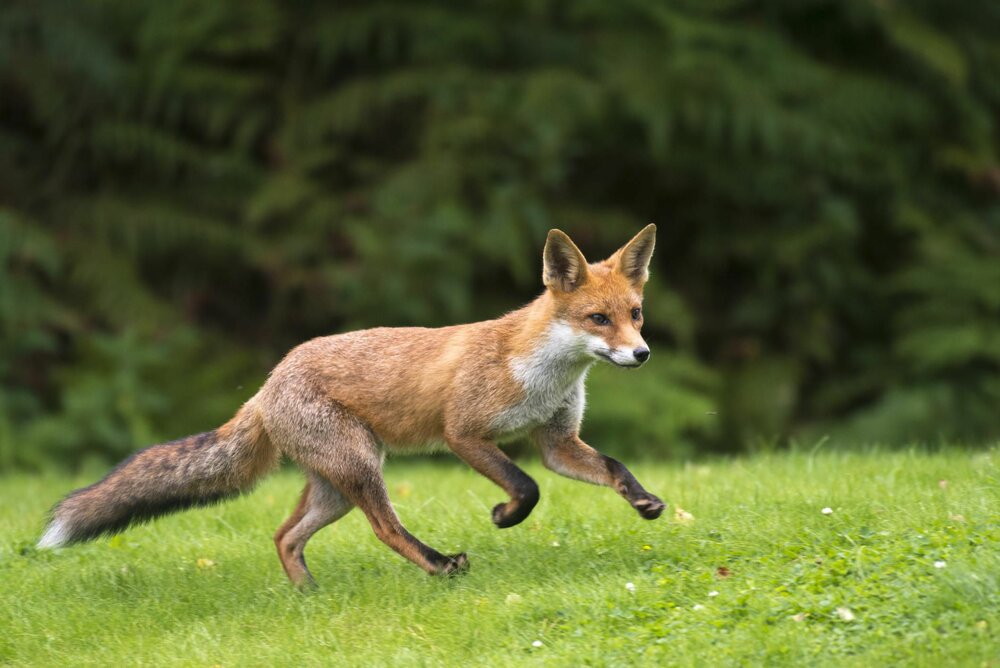World's intelligent hunters in a race for survival in Iran

TEHRAN – Foxes, the intelligent hunters who avoid humans, having a limited range in Iran, are endangered due to human encroachment on their habitats and the lack of safety, said Jalil Imani, a biodiversity and ecosystems management expert.
There are more than 20 species of foxes who eat almost anything, including small mammals, birds, reptiles, insects, worms and fruit. The common fox is considered by some as pest species, being an opportunistic hunter of game birds, ground-nesting birds and small mammals, often killing animals’ surplus to its needs.
Foxes in Iran are often seen in farmlands in search of rodents. They are also likely to feed on melons, scavenge in refuse dumps, or track hares and other small mammals, especially when there is snow on the ground. Foxes in Iran are trapped, shot, and hunted almost everywhere they occur, and yet they still manage to thrive.
Foxes feed on small animals like rats, but farmers turning pastures into agricultural land over the past few years are using pesticides to protect their product, which kill foxes' prey, and in some case the foxes themselves by the poisonous baits.
Four fox species inhabiting in Iran, including Blanford's, Corsac, Rüppell's and common foxes, Imani said, lamenting, according to the Red List of the International Union for the Conservation of Nature and Natural Resources (IUCN), all four aforesaid species of foxes in the world are defined as least concern, however in Iran, their condition is different.
“Blanford's fox is assigned endangered by the Department of Environment, any hunting or trade of which is considered illegal,” he noted, adding, while Corsac fox has been listed as extinct before sighting some in northeastern part of the country, which switched to critically endangered.
Rüppell's fox is also placed in the IUCN’s least concern category, while being vulnerable in Iran which requires protection, he said.
“Fortunately, common fox is in better condition and is not listed as endangered yet,” he added.
So far, no measures have been taken to estimate fox population in the country, he said, adding, so there are no accurate statistics on the number of foxes in the country.
“The results of genetic tests showed that genetic variation of the foxes is desirable. There are two major genetic groups in the country that are in some ways compatible with the global groups.”
Imani went on to say that the Rüppell's fox found mainly in Yazd, Kerman, somewhat Sistan-Baluchestan and Isfahan provinces, have proper genetic diversity, so there is still hope for the preservation of the sub species.
Blanford's and Corsac foxes while offering insufficient information for a proper assessment, can be conserved to some extent, he said, noting, for precise determination scientific analysis and researches must be conducted in this regard.
One of the most important threats to fox species are habitat fragmentation, as well as the use of pesticides eradicating their prey, road construction, rabies and stray dogs, although the conflict with humans is the leading cause for their heading toward extinction.
“Foxes feed on small animals like rats, but farmers turning pastures into agricultural land over the past few years are using pesticides to protect their product, which kill foxes’ prey, and in some case the foxes themselves by the poisonous baits.
“On the other hand, road accidents took lives of many of the smart species, for example, there is a road in northern island of Qeshm, in which one to two foxes are killed per day due to road crashes.
“Unfortunately, another threat posed to the foxes is hunting for the fur trade, or some people keep their pelt for prosperity beliefs and superstitions.
“Foxes are primarily nocturnal hunters who prefer to search for food at a time when there is little chance of being spotted by humans, therefore, they are no threat to humans and there is no need to persecute the precious species,” Imani regretted.
Corsac fox’s habitat no longer safe
An official with the Golestan DOE, Mahmood Shakiba, said in October 2018 that living conditions for rare corsac fox in the country is so improper that spotting a few nests of the species is a pleasure.
In the Iranian calendar year 1395 (March 2016-March 2017), some 14 Corsac nests have been found in Turkmen Sahara in Golestan province, of which only four nests have been active and last year the nests have no longer been active, he added.
All Corsac habitats have been destructed turning into agricultural land, animal husbandry, manufacturing workshops or factories, so that the animal has no place to live, he regretted.
What happens when species go extinct?
As the species is at the top of the food chain, it plays an important role in conservation of the country’s ecosystem as well as protecting other species.
When an ecosystem loses key species such as common fox, it triggers what ecologists call a trophic cascade—a butterfly effect that spirals down the food chain. A well-documented case study for this phenomenon is the gray wolf, once among the world's most widely distributed mammals. Prior to their extirpation, North American gray wolves were a key predator of deer, elk, moose, bison and caribou, as well as numerous smaller mammals. Following the wolves’ disappearance, the abundance of deer skyrocketed, with some populations climbing to six times their historical size.
Disappearance of foxes also have potential of disrupting the balance. For example, common fox’s function as an apex predator control the abundance of their prey and thus help to maintain a balance of nature.
FB/MG
Leave a Comment